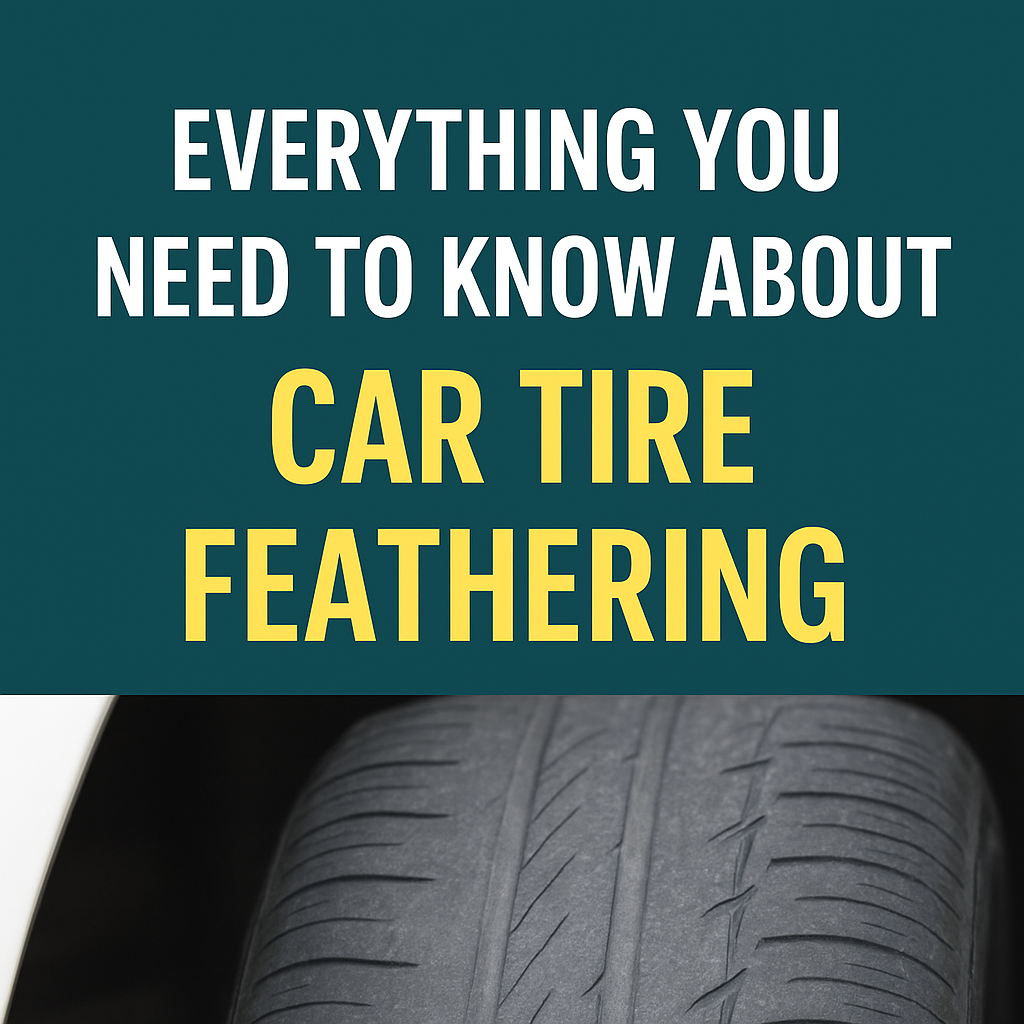Everything You Need To Know About Car Tire Feathering: Know The Ways To Fix It
In addition to uneven pavement, your tires may be feathered if your car feels a little bumpy on the road or if your steering wheel vibrates for no apparent reason. One of those minor yet dangerous problems that can impair your car’s handling, comfort, and even safety is tire feathering. The majority of drivers discover it too late, typically when the vehicle begins to pull to one side or emit an odd humming noise. You can prolong the life of your tires and save money by knowing what causes tire feathering and how to fix it before it gets worse.
What do you understand by tire feathering?
When your tires’ tread wears down unevenly, or when one side of each tread block becomes rounded while the other remains sharp, this is known as tire feathering. When you run your hand over the tire, it feels “feathered” or “scuffed” due to this uneven wear. The tread edges of new tires are typically sharp and even, but feathered tires feel rough in one direction and smooth in the other. In more extreme situations, the afflicted areas may extend over several inches of the tire, but occasionally this pattern only shows up in small areas.
It indicates that the tires are not keeping constant contact with the road when they are feathered. The car’s braking, cornering, and grip are all impacted by this uneven surface contact. When driving a safari car for sale, particularly at higher speeds, drivers may hear a low rumbling sound or feel vibrations. But the greatest risk is that, if the underlying cause is not addressed, feathering will rapidly worsen once it begins. Ignoring it can eventually result in tire failure, poor traction, and reduced fuel efficiency.
What are the actual reasons behind tire feathering?
The most frequent cause of tire feathering is incorrect wheel alignment. Your tires hit the road at the incorrect angle when your wheels are not properly aligned, which makes some tread sections bounce or drag rather than roll smoothly. This bouncing action causes one side of the tread to deteriorate more quickly than the other over time. Your tires cannot remain flat against the pavement when even one of the three camber, caster, and toe measurements is off. Fortunately, this problem can typically be resolved before it gets worse with a technician’s quick alignment check and adjustment.
But there are other culprits besides wheel alignment. Feathing may also result from worn-out suspension components, such as struts or shocks. Maintaining your car’s stability and tires in contact with the road is the responsibility of the suspension system. Your tires may bounce more than they should when these parts begin to fail, which could result in uneven tread wear. When driving over uneven surfaces, you may also experience vibrations, squeaking sounds, or a bumpy ride. In addition to increasing comfort, replacing worn suspension components stops additional tire damage.
What are the other factors to be considered?
An imbalance in the tire’s rotation can occasionally result in tire feathering. At certain speeds, a tire that is out of balance bounces because it spins unevenly. This causes erratic wear patterns, which ultimately result in feathering. A quick service that uses small weights to ensure even rotation can make a big difference in how your tires wear and how smoothly your car drives. A simple way to avoid this is to balance your tires every few months.
Additionally, bad wheel bearings may be a factor. When bearings begin to fail, the additional resistance may result in uneven tire wear because they help the wheels rotate with little friction. A bearing may need to be replaced if drivers frequently hear humming or grinding sounds when turning. It’s not too expensive to replace worn-out bearings, and it’s a crucial first step in avoiding more serious and expensive damage to your tires or suspension.
Do air pressure and tire quality impact feathering?
Your tires’ condition can also have a significant impact. Cheaper, lower-quality tires wear unevenly and more quickly because they typically have thinner rubber and less durable tread materials. These tires are more prone to feathering, cupping, and other irregular wear patterns when subjected to severe weather or rough roads. Purchasing a reputable tire brand may seem like an extra expense, but it will save you money on replacements over time and provide a safer, smoother ride.
Another factor that is easy to overlook is improper tire pressure. Your tires won’t properly contact the road if they are either overinflated or underinflated. Tires that are overinflated wear in the middle, while those that are underinflated wear down on the edges. Over time, feathering results from the unequal pressure distribution in both situations. One of the easiest maintenance practices that can completely avoid this problem is checking your tire pressure at least once a month, particularly during seasonal changes.
How risky could a tire feathering be?
It is possible because feathered tires don’t provide adequate traction on the road. They may have an impact on how your vehicle accelerates, brakes, and handles turns. When driving straight, you may also notice a little drift in the vehicle or a shake in the steering wheel. Feathing always signals a mechanical problem, whether it be with alignment, suspension, or tire pressure, even if it doesn’t seem serious at first. Your car’s stability is at risk if you ignore it, particularly on slick or uneven roads.
Rotating your tires and addressing the underlying cause early on can sometimes resolve mild feathering. The only safe course of action, though, might be to replace the tires if they are extremely worn out or uneven. It is not worth the risk to keep driving on damaged tires because it can result in blowouts or loss of control. When in doubt, have your tires inspected by a qualified tire shop to see if they need to be replaced or can be saved.
How can you prevent the car tires from feathering?
The key to preventing tire feathering is regular maintenance. You can prevent uneven wear by keeping your tires properly inflated, balanced, and aligned. At least once a year, or whenever you notice your steering pulling to one side or hit a big pothole, have your alignment checked. To guarantee that the tread wears uniformly on all four wheels, tires should ideally be rotated every six months.
Feathing is easier to reverse the earlier you notice it. Sometimes the uneven wear can be smoothed out before it gets too bad by rotating the tires and taking quick care of the underlying problem. Develop the practice of checking your tires once a month; keep an eye out for shiny, smooth areas on the edges, uneven tread patterns, and uneven texture. These minor inspections can help you identify issues early, enhance the handling of your vehicle, and greatly increase tire longevity.


Recent Comments